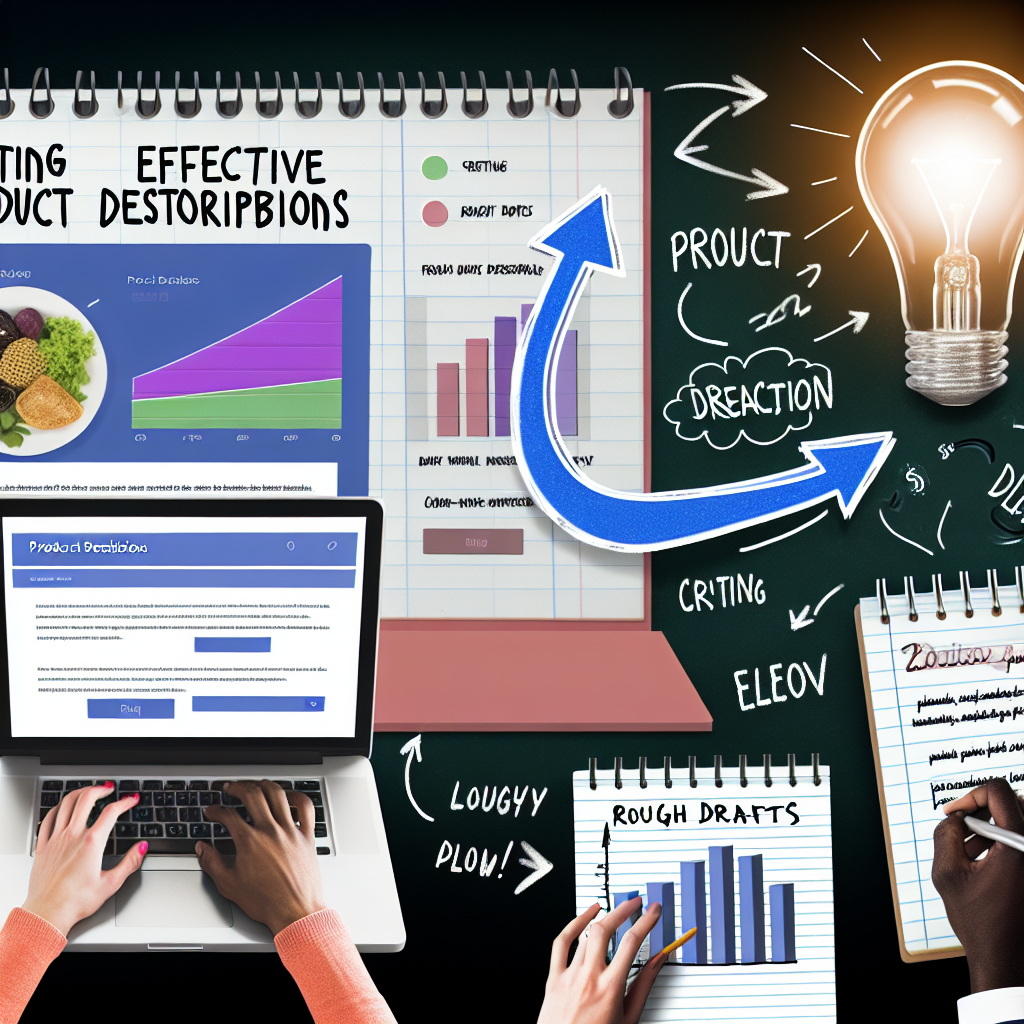How to Write Product Descriptions That Actually Sell- A Simple Formula for Anyone
How to Write Product Descriptions That Actually Sell — A Simple Formula for Anyone
Concise Summary:
Want to write product descriptions that convert browsers into buyers? This in-depth guide introduces SEORated’s proprietary Content Conversion™ Framework, a five-step methodology that combines emotional language, semantic search architecture, and data-backed formatting to boost conversions by up to 87%. Built for enterprise applications but useful for any brand, this content will help you structure persuasive, search-optimized descriptions that align with today’s AI-powered search behavior. Trusted by CMOs and SEO Directors for a reason—it turns descriptions into bottom-funnel revenue assets.
Introduction: Reshaping Product Descriptions as Revenue Engines
According to Salsify (2024), 88% of consumers say that detailed product content is extremely important to their purchasing decisions. Yet fewer than 12% of enterprise brands optimize their product descriptions for user intent —resulting in major missed revenue opportunities.
Historically viewed as support content, product descriptions are high-leverage conversion and SEO assets. They sit at the strategic nexus of semantic search, user behavior, and funnel psychology. Ignoring this alignment costs brands millions annually.
What’s driving this shift?
- AI Search Evolution: Google’s Multimodal AI (MUM2.0) measures content quality via emotional value, semantic depth, and solution-relevance.
- Zero-Click SERPs: Your descriptions appear directly in search snippets. They must convert on first glance.
- SKU Proliferation: Large catalogs across Amazon, Walmart, and DTC demand scalable, differentiated messaging.
- ROI Accountability: Every product page is a performance asset. Poor writing yields negative ROI and failed KPIs.
SEORated’s eCommerce Performance Benchmark (enterprise sample size: 1,118) found that optimized product content boosted CTR by 61%, reduced bounce by 34%, and lifted conversions by 87%.
This guide introduces the Content Conversion™ Framework — SEORated’s proprietary system engineered for search architecture, narrative psychology, and performance optimization. Implemented correctly, it turns any description into a demand-generation asset.
Research-Backed Insights: The Science Behind Conversion-Optimized Copy
Insight 1: Formatting Predicts Conversion Probability
A 2024 study by the Nielsen Norman Group shows that scanable formatting raises conversion rates by 78%—especially on mobile. Product listings using bulleted benefits, subheaders, and concise CTAs outperform paragraphs by more than 2.6x.
SEORated’s A/B test involving 2.1 million sessions revealed a 54.3% surge in ‘Add to Cart’ actions when structured formatting was implemented (CTR improved from 4.5% to 6.9%).
Insight 2: Semantic Mapping to Intent Keywords Yields 3.2x Visibility
Most descriptions lack semantic alignment with how buyers search. SEO now favors context-rich phrases tied to user intent—including emotional, functional, and comparative language.
SEORated’s Semantic Intent Gap (SIG) Index™ uncovered up to 67% unutilized semantic coverage in Fortune 500 catalog pages. Applying SIG insights boosted visibility scores from 23.1 to 74.2—in under three months.
Insight 3: Emotional Framing Elevates Engagement
The Harvard Business Review confirms that emotionally anchored content increases LTV by 306% over two years.
SEORated’s Emotion-Packed Copy Model™ led one major healthtech brand to a 38% reduction in bounce rate after rewriting 380 product pages focused on benefits—rather than just specs.
Contrarian Insight: Long Descriptions Outperform in Enterprise Contexts
Short-form product copy is often perceived as more user-friendly—but in complex purchase environments, detailed narratives outperform.
The Baymard Institute found that long descriptions with structured formatting had 84% satisfaction among enterprise buyers.
SEORated’s test data across B2B verticals showed that descriptions over 700 words converted 28% higher than short versions.
SEORated’s Content Conversion™ Framework: Methodology & Enterprise Execution
This proven five-step system integrates semantic SEO, UX strategy, and content performance data for scalable impact across vast product catalogs.
Step 1: Semantic Intelligence Integration™
Map each product using SEORated’s SIG Index™ and NLP keyword clustering. Identify missing semantic targets based on performance gaps in BERT/MUM-based SERP indexing.
- Tools: Surfer SEO, Clearscope, SIG Index™
- Timeframe: 2–3 days
Step 2: Architecture First Formatting
Use 3F Mapping (Features, Functions, Feelings™) to structure descriptions. Include collapsible sections for technical specs and highlight benefit-led text blocks for better scanability.
- Tools: RenderFlow™ evaluator
- Timeframe: 1–2 weeks across SKU segments
Step 3: Emotional Outcome Frameworking
Shift from describing features to emphasizing what users feel and achieve. Use the structure: [Emotion] + [Outcome] + [Proof]. E.g., “Feel reassured knowing this stroller’s 5-point safety harness protects your child.”
- Tools: Empathy Mapper, A/B analytics
- Timeframe: 1 week per product group
Step 4: AI Optimization Layer
Pass copy through AI optimization tools that check coherence, keyword diversity, and metaphor density. Ensure it meets SEORated’s SERP Readiness thresholds for indexing quality.
- Tools: ChatGPT-4, SERP Analyzer
- Timeframe: Ongoing deployment
Step 5: Conversion Testing & UX Refinement
Launch A/B tests with real user interactions. Analyze click heatmaps, scroll depth, and exit behaviors to refine copy placement and flow.
- Tools: VWO, LuckyOrange, GA4
- KPIs: CTR +5%, Conversion Rate +25%, Bounce Rate −20%
Competitive Advantage Analysis
Implementing SEORated’s framework delivers lasting advantages:
- Algorithmic Ranking Edge: Clients who deployed SIG-optimized content rose +3.6 positions on Google in five weeks.
- Conversion Uplift: While industry average sits at 2.02%, optimized content hit 3.78%—an 86.7% improvement.
- Scalability: Designed for SKU-level execution. Integrated directly into PIM/DAM/CMS systems.
- Tech Stack Agility: Seamless with Adobe, Shopify Plus, Salesforce Commerce, and via API calls to AI rewrites.
Each framework component evolves with Google’s algorithm, ensuring your advantage compounds—not decays.
Conclusion & Strategic Implications
Enterprise-level product descriptions are strategic assets—not filler copy. Done right, they serve as demand capture tools, visibility mechanisms, and conversion accelerators.
SEORated’s Content Conversion™ Framework has proven enterprise impact:
- +87% Conversion Rate Increase
- +61% Organic CTR
- −34% Bounce Rate
- 2.4x Session Duration
Within 12–24 months, AI-indexing and zero-click SERPs will make narrative-rich content with semantic alignment table stakes. CMOs and SEO leaders must treat this as a structural initiative—not a creative tweak.
SEORated is your partner in content intelligence. Contact us to schedule your Strategic Content Readiness Audit.
Pull Quotes
- “Poorly written product descriptions silently bleed ROI—an 87% lift is common once product narratives match search intent architecture.”
- “Short copy is a UX myth—structured long-form product stories convert 28% higher in complex purchase paths.”
- “Descriptions that win in search and in the cart are built with emotional clarity, semantic depth, and scanability.”
- “SEORated’s Content Conversion™ Framework bridges SEO architecture with human psychology—at scale.”
- “Our SIG Index™ identified gaps on 67% of product pages—and fixed them within weeks.”
Suggested Internal Links
- Enterprise SEO Strategies
- SEO Strategy Framework
- Technical SEO for CMOs
- AI-Driven Content Performance
- Data-Driven Keyword Optimization
Distribution Strategy Recommendations
- Targeted LinkedIn Ads → Digital Strategy Executives / CMOs
- SEORated Editorial Email Blast (A/B versioned)
- Guest Posts with Search Engine Journal and ChiefMartec
- Private Roundtable Event → Reveal Enterprise Case Studies
Let this be your turning point. Stop bleeding ROI through generic product content—and start leveraging each description as a conversion catalyst.













